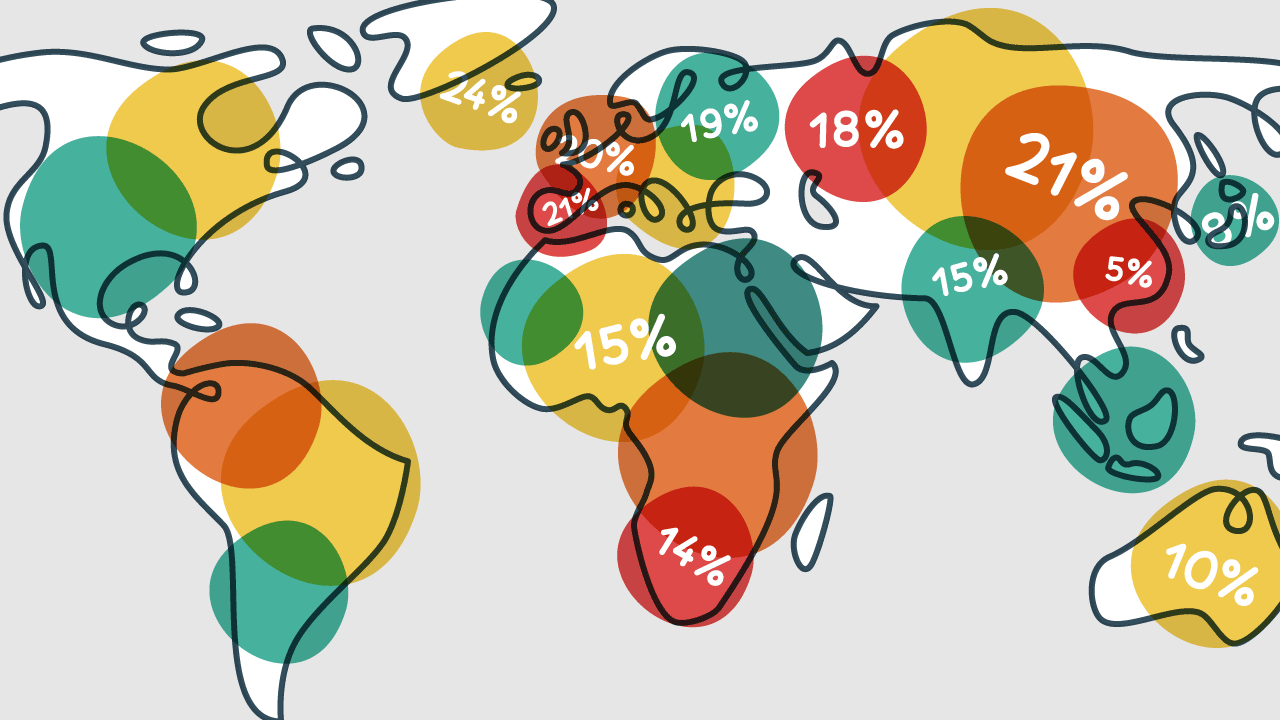Different Taxes and Tax Rates in Developeountries and India, and services offered against those taxes.

Tax Rates in Developed Countries and India
The country is in the middle of a crisis and we’ve all borne losses of the government’s inefficiency at the expense of our loved ones. These inefficiencies were delineated in the form of terribly lacking health infrastructure, the inadequacy of medicines and necessities, a corrupted bureaucratic system, and several other parameters that made us see more clearly the pitfalls of the country’s running system. However, the big question here is, why? Governments all around the globe have tried to mitigate the impact of the virus via assurance of necessities and equitable allocation of resources to the people, which, at the end of the day, have been provided through people’s money only.

It’s a fairly simple logic to grasp, right? You’re paying your government a share of your wealth to avail yourself of the resources that your government and the country provide you. The official definition of the Indian tax system tells us that the government collects taxes to generate income for undertaking public-works projects and improve the country’s economic footprint. However, as can be interpreted from the lack of even basic necessities, the Indian government is doing a pretty bad job at it.
So, why is that? Is the government charging less from us? Do the taxes in the country not cover the basic services that are to be provided? Let us dig deep and find out.
But before we do that, let us narrow down our approach to a number of taxes to wholly analyze the situation, especially because a comparison of all the tax rates and types is difficult and subjective owing to complex systems and different approaches of different countries. Therefore, we’ll talk about corporate tax, income tax, sales tax, which are the major indicatives of both the direct and indirect taxes in the country. Apart from these, other taxes levied in the country include direct taxes like the wealth tax, gift tax, estate duty, securities transaction et cetera and indirect taxes like dividend distribution tax, property tax, professional tax et cetera.
Now, to compare tax structures between India and developed countries, a comparison can be made on a number of parameters, which we’ll discuss as we go by, as follows-

Tax Rates-
The age-old question of if the taxes are too high in India continues to the day, despite the government’s approach to cut down taxes in their attempt at trickle-down economics. Therefore, as per data provided by the PwC and World Bank authored a report of 2020 and Trading Economics report, the personal tax rates in India are significantly lower than that of developed nations, however, still significant when compared to the BRICS countries that constitute of emerging economies like Brazil and Russia.
As for the corporate tax, the rate of India comes at the median level, which is a different story from a while ago when the corporate tax rate in India was much higher. As mentioned, these tax rates correspond to the current regime’s approach towards “encouraging the wealth creators”. However, one critical evaluation to be noted here is that when a profitable corporate pays lower taxes, the surplus reaches the hands of shareholders, which are the rich of the country. This has primarily been the reason behind India’s widening income gap, even as the pandemic struck the company because the corporates earned profits at the expense of layoffs for poor people. So much for trickle down the benefits!
The tax rates on goods in the country are comparatively lower when compared to the developed and emerging BRICS countries. Even though the methodology is quite different for economies which makes it difficult to reach, changes and flexibility in these rates can be an indicator of the country’s position. Note that South Africa, China, Japan, and Brazil charge less in taxes on goods, while economies like the US and UK form the upper end of the spectrum.
Tax to GDP ratio-
Now, this particular parameter would put forward the dilemma the Indian tax system is often encountered with. As per data published for 2018-19, India’s tax-GDP ratio stood at 17-7.5 per cent, which is significantly lower than that of developed countries, the average for which stand at about 34.3 per cent. So, Is India an under-taxed country?

Even though the tax rates in the country are fairly significant in comparison to the developed countries, the paradox presented by the low tax to GDP ratio is primarily because a larger chunk of India’s tax collection is through indirect taxes, in contrast to the direct tax prevalence in developed nations. This points at the tenuous tax administration system of the country and the loopholes found by the rich to exempt tax payments, a not-so-new phenomenon for India.
Services provided-
This section is the most important to understand the actual image behind these facts and data because while the tax rates are not too contrasted from developed economies, the services provided are. It is because even though developed economies do collect higher tax rates from their citizens both in terms of income tax and corporate tax, the social security net provided to the citizens is quite commensurate with the payment. For India, however, the said safety net is next to negligible. Not only that, most high tax countries in question undertake considerable investments in finance cheaper education and health facilities to the citizens, which in the case of India is a joke, to say the least.
Unemployment and social security benefits were not adequately provided even at the time of emergency during the COVID-19 pandemic when the unemployment rate reached double digits, let alone under normal circumstances. As for developed nations, for example, the USA, unemployment benefits were increased significantly in proportion with the unemployment rate, in every quarter of 2020.
So, while we may be able to compare the tax rates of India with other countries and find solace in that, the services provided with that revenue is a much different, and rather grim, story. India differs not only in terms of services but also in the administration and collection of these taxes, time to pay the taxes, and several other parameters that significantly contribute to any rational study of tax system comparison.
As for yet, there’s a long way that India has to go in terms of tax rates and the corresponding services provided, especially at a time when the world is picking up on progressive taxes, majorly due to increased income inequalities in the world.




